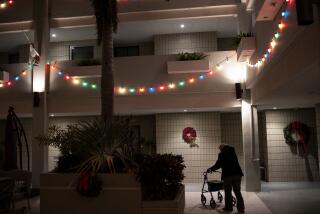Book review: ‘Pocket Neighborhoods’
- Share via
Ross Chapin’s ‘Pocket Neighborhoods: Creating Small-Scale Community in a Large-Scale World’ advocates clusters of 12 to 16 households.
Pocket Neighborhoods: Creating Small-Scale Community in a Large-Scale World
Ross Chapin
Taunton: 224 pp., $30
The phrase “think globally, act locally” takes on new meaning in this book, which shows what is possible when residents in close proximity share a commitment to community.
Chapin, an architect, refers to these groupings, typically 12 to 16 households, as pocket neighborhoods.
“Pocket neighborhoods are clusters of homes or apartments gathered around a landscaped common area,” he writes, citing other shared elements: a garden courtyard, a pedestrian street, joined backyards or perhaps an alley.
The book presents different types of pocket neighborhoods in rural, suburban and urban areas, including new construction and established homes. Most often, the neighborhoods are a socioeconomic range of families, singles and older residents. The focus, Chapin emphasizes, is a coherent design that connects people and their houses to one another while maintaining privacy within individual homes.
Successful neighborhoods make interaction easier and natural, whether residents are on a front porch, in a garden or inside a common shared building. Sustainability becomes not just a matter of materials but a concept that relates to the emotional and psychological well being of residents.
The book looks at pocket neighborhoods developed with direct involvement from residents. These are thriving models that show bigger is not always better when it comes to houses or neighborhoods. More important than size are a sense of belonging and pride of ownership.
The book highlights “neighborhood pioneers,” and through their stories and interviews with architects, we learn how residents were able to achieve a sense of community. In several instances, it took new laws to ensure development of a pocket neighborhood.
“Pocket Neighborhoods” includes an extensive list of resources and organizations related to urban design and eco-friendly neighborhoods, but this is not a how-to book. It is information and inspiration, a timely discussion as regions grapple with housing density and look for ways to build a sense of community along with every new house, apartment and condo.
More to Read
Sign up for our Book Club newsletter
Get the latest news, events and more from the Los Angeles Times Book Club, and help us get L.A. reading and talking.
You may occasionally receive promotional content from the Los Angeles Times.










